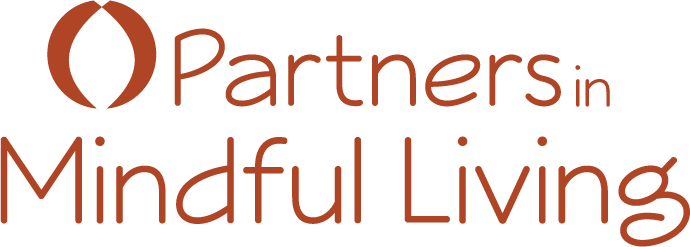
October 31, 2016
If you’ve read past Seedlings you’re familiar with the term automatic pilot (AP), a state in which you’re unaware of what you’re doing. Your body may be here but your mind is there. Switching between the past and the future – remembering or planning.
Automatic pilot is our default – when we’re confronted with a situation that stirs us up, we want to fall back on something we know. Our psyche wants to help us out, so it leads us back to what we’ve always done. Sometimes that’s great – if we want to replicate our best dive – but not so great if we’re faced with something that requires a new response.
In many situations AP can serve you well. If you’re an Olympian or competitive athlete, allowing body/cognitive/emotional memory to take over can profoundly reduce the energy you need to repeat or surpass a great past performance.
What about when AP isn’t beneficial? When presented with a new challenge, what if falling back on past behavior hinders rather than moves you forward?
Your baby’s cry is tinged with something you haven’t heard before. Maybe letting him cry, as you’ve sometimes done in the past, isn’t appropriate here.
Or someone says something that repeatedly triggers the same emotional reaction from you; but you want to respond differently because this relationship really matters.
The good news is that we have another level of consciousness. It’s called the observer self (OS). And the observer self’s role is simply to witness what’s going on.
We humans have a unique ability to be in two states of consciousness at once. We think, see and feel, and at the same time another part of us is able to observe what we’re doing. It’s like looking in a mirror, or directing the beam of a flashlight back at ourselves.
When you can actually see what you’re doing, you have a choice. You can choose between continuing to feel what you’ve always felt, think what you’ve always thought, do what you’ve always done, or come up with something new.
How often have you heard yourself or someone else say: “That’s just who I am”? Well, turns out, It may be how you’ve behaved at times, but that doesn’t mean it’s who you are, or that you can’t change.
Your OS is neutral. You notice that you feel depressed or anxious. The part of you that’s noticing is neither depressed nor anxious. It’s simply observing you moving through those states.
Behind our ability to be aware or mindful is the observer self.
That part of us is like the ocean. On the surface, storms and waves under angry skies. Underneath, at the depths of the ocean floor, no matter what’s going on at the surface, there is stillness.
Your OS is equivalent to taking a step backward. On automatic pilot, you’re tossed around and battered. A moment later you pause, breathe out and soften your body. You are once again in touch with a vast and comforting sense of peace and a world of choices.
When you’re in touch with the observer self you can non-judgmentally watch your thoughts, feelings, bodily sensations, and the life around you, and choose your responses. You’re no longer a prisoner of automatic pilot.
Along with that self-awareness comes the subtle joy of just being here, alive, enjoying whatever is happening.
Being in touch with your observer self doesn’t mean you’re going to notice that you enjoy everything. You’ll never get me to put a piece of black licorice in my mouth, I don’t care how grounded I am in my observer self.
The next time you notice you’re anxious, shine the flashlight back on the part of you that’s doing the noticing, and ask yourself if it’s anxious. I know, kind of abstract. It’s definitely a new way of thinking and a new way of relating to thoughts and feelings and behaviors. It takes practice.
No matter how overwhelmed and buffeted by life’s storms I feel, on a pretty regular basis I have access to this place of neutral calm where there’s hardly a ripple. My personal experience tells me it’s worth the effort.
I hope you’ll give it a try! Set an intention to occasionally step back from your thoughts and emotions and witness them from the place of your observer self.
As with everything I offer, play with the ideas. Don’t take any of this too seriously. If you find yourself feeling frustrated, you’ve stopped playing!
As always, look forward to hearing your reactions.
Much love,

Another outstanding blog from you Robyn! Thank you!
So lovely to hear from you Cricket! Love getting your newsletter and hearing what you’re up to! It’s taken me a while to figure out how to write about this concept of observer self. Because it’s so profoundly simple and yet I found myself complicating it every time I started trying to articulate it.
Serendipity is so cool! The conundrum of being in the moment without judging got my attention yesterday. I was out walking, on my way home when I decided to try a little mindfulness. It was a beautiful day, sunny, mild, light westerly breeze, so I thought, ‘What a beautiful day!’ But that’s a judgment, isn’t it? Okay, try something else. ‘The eleagnus flowers smell so sweet.’ Oops, another judgment! ‘I’m not very good at this.’ Jeezy-peezy, yet another judgment! Can anyone be truly in the moment without judging what their senses are telling them?
Then. Robyn, your post showed me what I’m struggling with is separating judgment from observation. Now I have the terminology to tell the difference between registering a lovely day or a heady scent and telling myself I suck at being mindful.
Thank you so much!
No coincidences! Loved your ahas :). And you can even observe your judgments about your judgments and all of a sudden the sting is gone! Minds seem to judge 24/7. So what? That was an epiphany for me – the idea that I could notice my notice my judgments and not only not believe them, but be entertained by them!